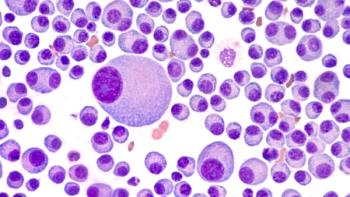
How Safe are New HCV Treatments for Liver Transplant Patients?
Is sofosbuvir plus ribavirin a viable option for hepatitis C virus therapy after liver transplant?
A small observational study published in the World Journal of Gastroenterology began to describe a safety profile for patients using sofosbuvir (Sovaldi) plus ribavirin (SOF/RBV) as therapy for recurrent hepatitis C virus (HCV) infection after a liver transplant.
In the study, 42 adult patients with recurrent HCV underwent a liver transplant (LT) at least 12 months prior to initiating a sofosbuvir-based treatment regimen at Mount Sinai Medical Center, from December 2013 to June 2014. The median time between LT and initiation of HCV therapy was 5.4 years (IQR 2.1 - 8.8 years).
Thirty-eight patients (90%) received SOF/RBV regimens, and 4 patients (10%) received sofosbuvir plus pegylated-interferon plus ribavirin (SOF/PEG/RBV) regimens.
Researchers identified a control group of 29 patients who experienced no serious complications from sofosbuvir-based therapy, defined as new-onset hepatic decompensation and/or other serious adverse events (SAEs, as defined by the Food and Drug Administration). Fifty-two percent of the control group achieved sustained virologic response at 12 weeks (SVR12).
A case group of 13 patients represented 31% of the total study cohort. Researchers defined the case group as patients who experienced 1 or more episodes of new-onset hepatic decompensation and/or SAE.
Thirty-one percent of the case group achieved SVR12. The average time from treatment initiation to the first adverse event was 4.9 weeks (SD 3.6 weeks; range 2-15 weeks). Episodes often involved multiple complications.
Anemia requiring blood transfusion was the most common SAE, affecting 8 of 13, or 62% of the case group. Decompensation affected 7 of 13, or 54% of the case group.
Characteristics Associated with Adverse Events
Compared with the control group, patients who experienced decompensation and/or SAE had lower body weight (P = 0.04), baseline hemoglobin (P = 0.01), and estimated glomerular filtration rate (eGFR) (P = 0.03).
Comparing control and case groups, there were no significant differences in age, sex, years since transplant, comorbid conditions, fibrosis-4 (FIB-4) scores, treatment regimen, genotype, HCV viral load, or markers of liver impairment.
Univariable analysis revealed that lower hemoglobin, lower eGFR, and higher serum total bilirubin were factors potentially associated with hepatic decompensation and SAE.
Safety Profile for Patients After Liver Transplant
Authors concluded that SOF was generally well-tolerated by study participants, although RBV-induced anemia remained a prevalent challenge.
The efficacy of sofosbuvir-based anti-HCV therapy for patients after liver transplant was reasonable, with 45% of the total cohort achieving SVR12.
The characteristics and factors associated in this study with hepatic decompensation and other SAEs will help health care providers identify high-risk patients when evaluating treatment options for recurrent HCV infection post-LT.
Authors said it is important to note that adverse events did not necessarily affect treatment outcome, nor were they necessarily treatment-related. All LT patients take some form of immunosuppressant that frequently impairs renal function, and the hepatic decompensation observed in this study was likely due to the natural progression of HCV.
Newsletter
Stay informed on drug updates, treatment guidelines, and pharmacy practice trends—subscribe to Pharmacy Times for weekly clinical insights.




















































































































































































































